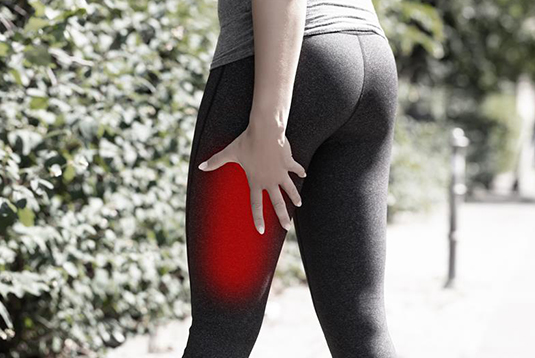
In professional football, few things can derail a wide receiver’s season faster than a hamstring injury. Houston Texans wide receiver Christian Kirk recently battled a hamstring strain that forced him off the field, highlighting just how common and frustrating these injuries can be for explosive athletes.
At CLS Health Sports Medicine, we often treat athletes dealing with similar hamstring injuries, from weekend warriors to competitive players. Understanding how these injuries occur and how to prevent them can help keep you in the game.
What the Hamstring Does
The hamstrings are a group of three muscles located on the back of the thigh. They play a crucial role in bending the knee and extending the hip, movements essential for sprinting, cutting, and jumping. When these muscles are pushed past their limits, small tears can develop, leading to pain, tightness, and loss of power.
Why Wide Receivers Like Christian Kirk Are Prone to Hamstring Injuries
Wide receivers rely on speed, acceleration, and rapid direction changes. That explosive movement puts enormous stress on the hamstrings. Common risk factors include:
- High-speed running: Sudden bursts increase muscle tension and eccentric strain.
- Fatigue: Late-game tiredness can lead to poor running mechanics.
- Previous injury: A prior strain makes reinjury more likely.
- Muscle imbalance: Overdeveloped quadriceps with weaker hamstrings can disrupt stability.
Christian Kirk’s Recovery Timeline
The recovery process depends on injury severity:
- Grade 1 (mild strain): Usually heals in 1–3 weeks with rest, gentle stretching, and therapy.
- Grade 2 (moderate tear): May take 4–8 weeks and requires progressive strengthening and flexibility training.
- Grade 3 (complete tear): Can take several months and may need surgical repair.
In Kirk’s case, his rehab likely involved a phased recovery plan starting with pain control and mobility restoration, followed by eccentric hamstring strengthening, neuromuscular retraining, and sport-specific drills before returning to full-speed play.
Preventing Hamstring Injuries: Expert Tips
For athletes and active adults, these preventive measures can reduce the risk of hamstring strains:
- Warm up dynamically: Use leg swings, high knees, and hip mobility drills before activity.
- Strengthen eccentrically: Try Nordic curls, single-leg Romanian deadlifts, and resistance band exercises.
- Stay flexible: Balance hamstring and hip mobility to maintain symmetry.
- Avoid overtraining: Gradually progress sprint intensity and volume.
- Hydrate and recover: Proper nutrition and rest support tissue repair and resilience.
Sports Injury Care in Houston
Hamstring injuries may be common, but they don’t have to sideline your season. With the right evaluation, targeted therapy, and gradual return-to-play strategy, most athletes recover fully and return stronger.
At CLS Health Sports Medicine, Dr. Javier Rios, M.D., a board-certified sports medicine physician in Houston, specializes in non-surgical treatments for muscle strains, ligament injuries, and performance recovery. Whether you’re a football player, runner, or recreational athlete, Dr. Rios provides customized care to help you heal, strengthen, and prevent future injuries.
Schedule your consultation today to learn more about sports injury rehabilitation and non-surgical treatment options.











